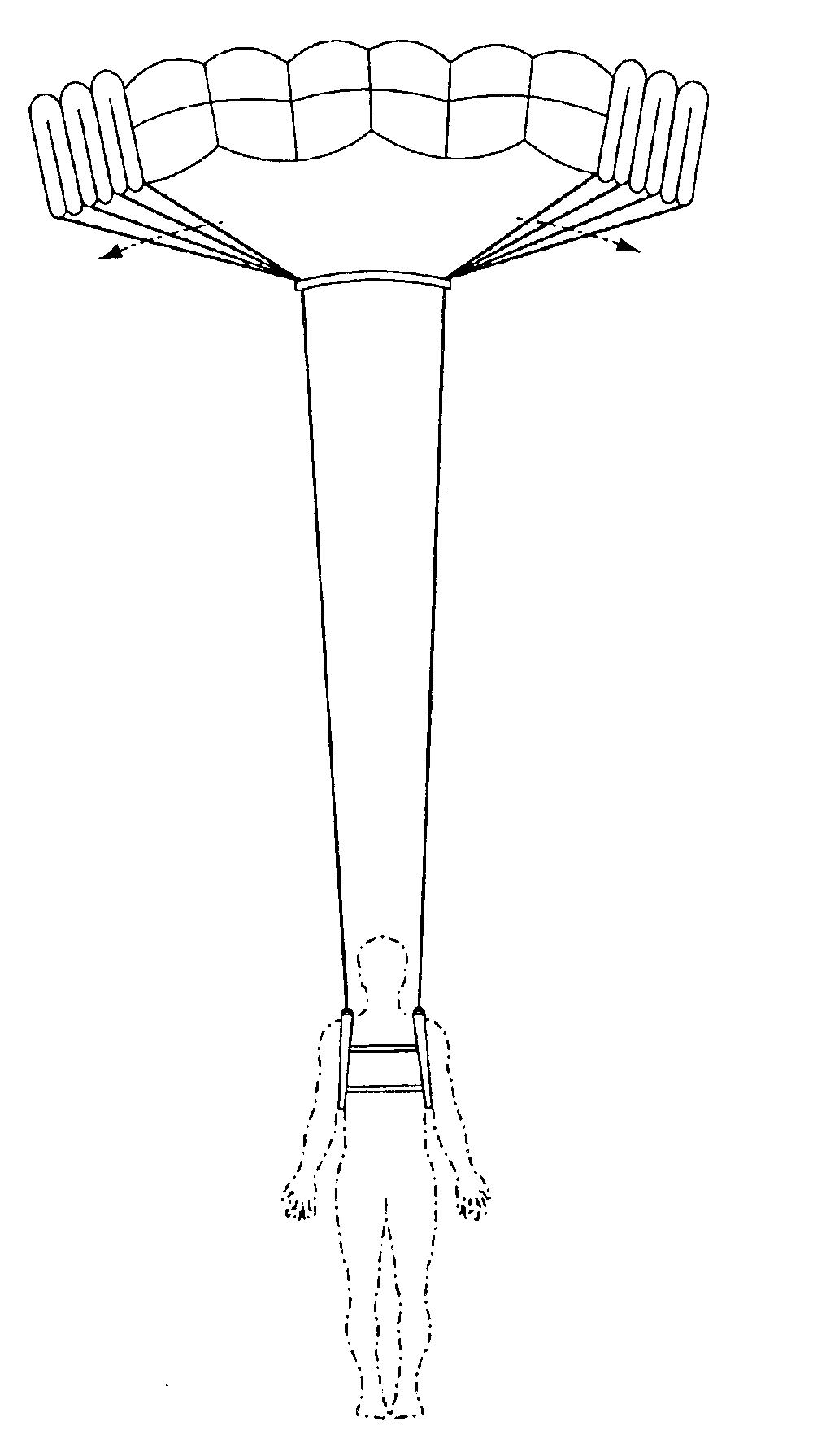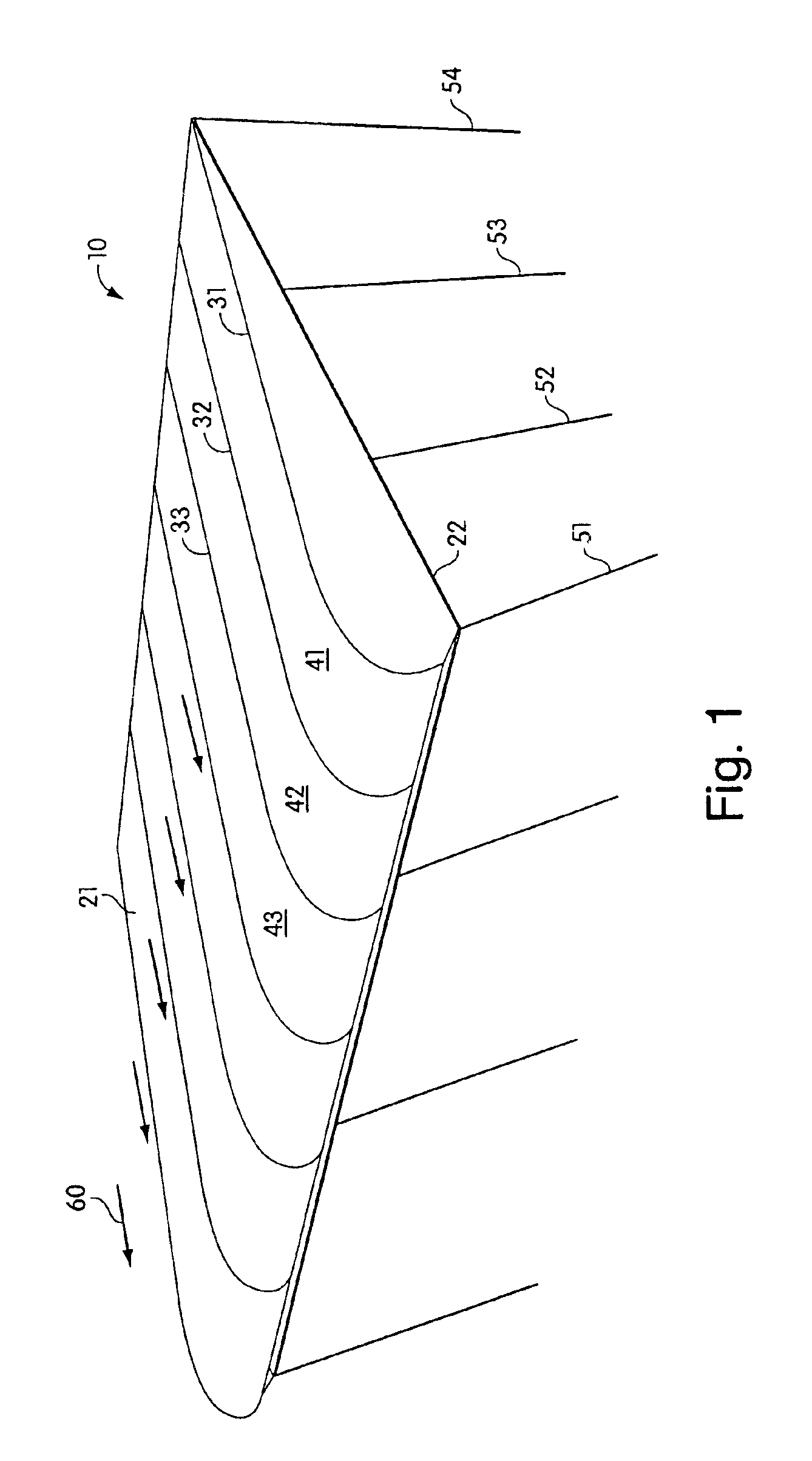RAM air parachute with multistage deployment
a parachute and multi-stage technology, applied in the field of parachutes, can solve the problems of slowed, more ordered opening, and partial opening of the canopy, and achieve the effect of increasing the flow of air and inflated more slowly
- Summary
- Abstract
- Description
- Claims
- Application Information
AI Technical Summary
Benefits of technology
Problems solved by technology
Method used
Image
Examples
Embodiment Construction
[0022]FIG. 1 illustrates a canopy of a ram air parachute 10 according to an embodiment of the present invention. The ram air parachute 10 includes a top skin 21 and bottom skin 22. A plurality of vertical ribs 31, 32, 33 are formed between the top skin 21 and the bottom skin 22 forming a plurality of cells 41, 42, 43. Typically, ram air parachutes to which the present invention applies have seven (7) or nine (9) cells. However, any number of cells can be used in connection with the present invention. Suspension lines 51, 52, 53, 54 are attached to at least some of the plurality of ribs. Not all of the suspension lines are shown in FIG. 1. Generally, suspension lines are attached to every other rib in the ram air parachute. The suspension lines are connected together to provide proper suspension of the user below the canopy and maintain the structure and the orientation of the canopy with respect to the pilot. FIG. 1 illustrates an elliptical canopy, but any shape canopy could be use...
PUM
 Login to View More
Login to View More Abstract
Description
Claims
Application Information
 Login to View More
Login to View More - R&D
- Intellectual Property
- Life Sciences
- Materials
- Tech Scout
- Unparalleled Data Quality
- Higher Quality Content
- 60% Fewer Hallucinations
Browse by: Latest US Patents, China's latest patents, Technical Efficacy Thesaurus, Application Domain, Technology Topic, Popular Technical Reports.
© 2025 PatSnap. All rights reserved.Legal|Privacy policy|Modern Slavery Act Transparency Statement|Sitemap|About US| Contact US: help@patsnap.com



